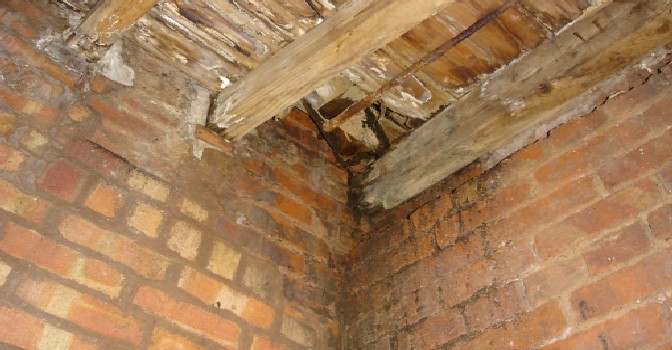Although you might not initially realise it, timber is a material that is widely used in houses and can cause significant problems to your property when it has not been looked after. One of the prime risks to structural timber is that over time – it can rot. There are two main types of rotting that can happen, dry rot and wet rot. Telling the difference between the two will get you on the right track to successfully getting rid of it.
Wet Rot
Wet rot tends to stem from porous surfaces so this could classify as anything made from such timber which has a moisture content of 50%. Having wet rot is a feasible predicament to find yourself in. The main problem that comes with having wet rotting is when it is unchecked or it can cause weaker timber and long-term internal damage to your home. In addition to this wet rot can also trigger decay in plaster, wallpaper and carpeting. This variation of rotting is often caused by either Coniophora Puteana or its the less common cousin Poria Vaillantii While each type of wet rot can appear to be a bit different in appearance, but mostly it will come as a black, white or brown fungus and have a damp, musty, smell as well as a sponge-like appearance that will be felt under several coats of paint. You may also see flaking layers of paint appearing through the surface.
Dry Rot
Dry rotting is seen as much more severe than wet rotting as it’s a more dangerous form of decay; Serpula Lacrymans is the name of this genre of fungus. It will appear as digesting sections of timber that will give it strength. Different to wet rot, it can move without the aid of any form of moisture, this is because it can create moisture through the consuming the timber. Once dry rot appears, it can put the structural integrity of your home at a major risk.
Treatment
Thankfully you can treat this common household issue. As dry and wet rot are slightly different, in either case, you will require a specialist to visit. They will locate and eliminate the affected area. In terms of dry rotting, the affected timber or material needs to be taken out, replaced, and the masonry treated with a special biocide to prevent any dry rot growth. Wet rot requires a similar process, the water ingress must be identified and then the area dried to see what parts have been damaged. Again, the area must be replaced then treated to stop regrowth.
Here at Archer Specialist Treatments, we can solve your problems of wet and dry rot and have done so on many occasions including inside a domestic roof void. To find out more, please get in touch.

